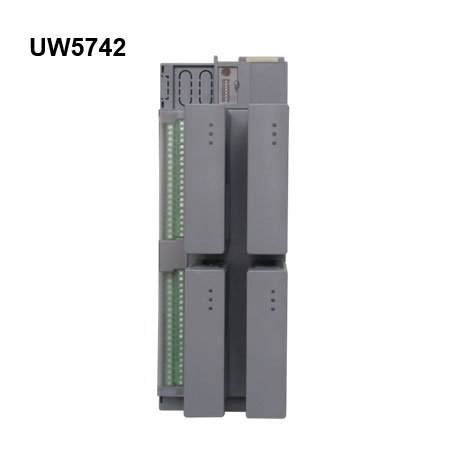Understanding How an 8-Channel Digital Source Output Module Transmits Signals
2024-06-03
In the world of industrial automation and control systems, the 8-Channel Digital Source Output Module is a vital component. This module's ability to transmit signals to multiple devices efficiently is crucial for system functionality. In this blog post, we'll delve into how an 8-Channel Digital Source Output Module transmits signals and the key factors that influence its operation.
To start, it's important to understand the basic principle of digital signal transmission. Digital signals are binary in nature, meaning they consist of two states: on (high) or off (low). In an 8-Channel Digital Source Output Module, these signals are generated and transmitted through each of the eight independent output channels.
Each output channel on the module typically has a transistor or similar switching device that controls the flow of current. When a control signal is sent to a specific channel, it activates the corresponding transistor, allowing current to flow through the output terminal. This current flow represents the 'on' state of the digital signal. Conversely, when the control signal is removed or set to a low state, the transistor is deactivated, stopping the current flow and representing the 'off' state.
The key factor that enables the module to transmit signals is the control logic within it. This logic is typically implemented using a microcontroller or similar device that receives input commands from the system's central controller. The microcontroller interprets these commands and generates the appropriate control signals for each output channel.
To ensure reliability and stability, the 8-Channel Digital Source Output Module often incorporates additional features. One such feature is noise rejection, which helps filter out unwanted electrical interference that could potentially disrupt the signal transmission. This ensures that the signals sent to the connected devices are clean and accurate.
Another important aspect is the isolation between the output channels. This isolation helps prevent cross-talk or interference between channels, ensuring that each channel operates independently. It also protects the system from potential damage caused by electrical faults or external factors.
Finally, the module's ability to transmit signals efficiently is also influenced by the type of connectors and cables used. High-quality connectors and cables with low impedance and high bandwidth can help minimize signal loss and ensure faster transmission speeds.
In summary, an 8-Channel Digital Source Output Module transmits signals through its independent output channels using a control logic system. The module incorporates features like noise rejection and isolation to ensure reliable signal transmission. Understanding how these modules operate can help engineers and technicians troubleshoot and optimize systems for maximum performance.



